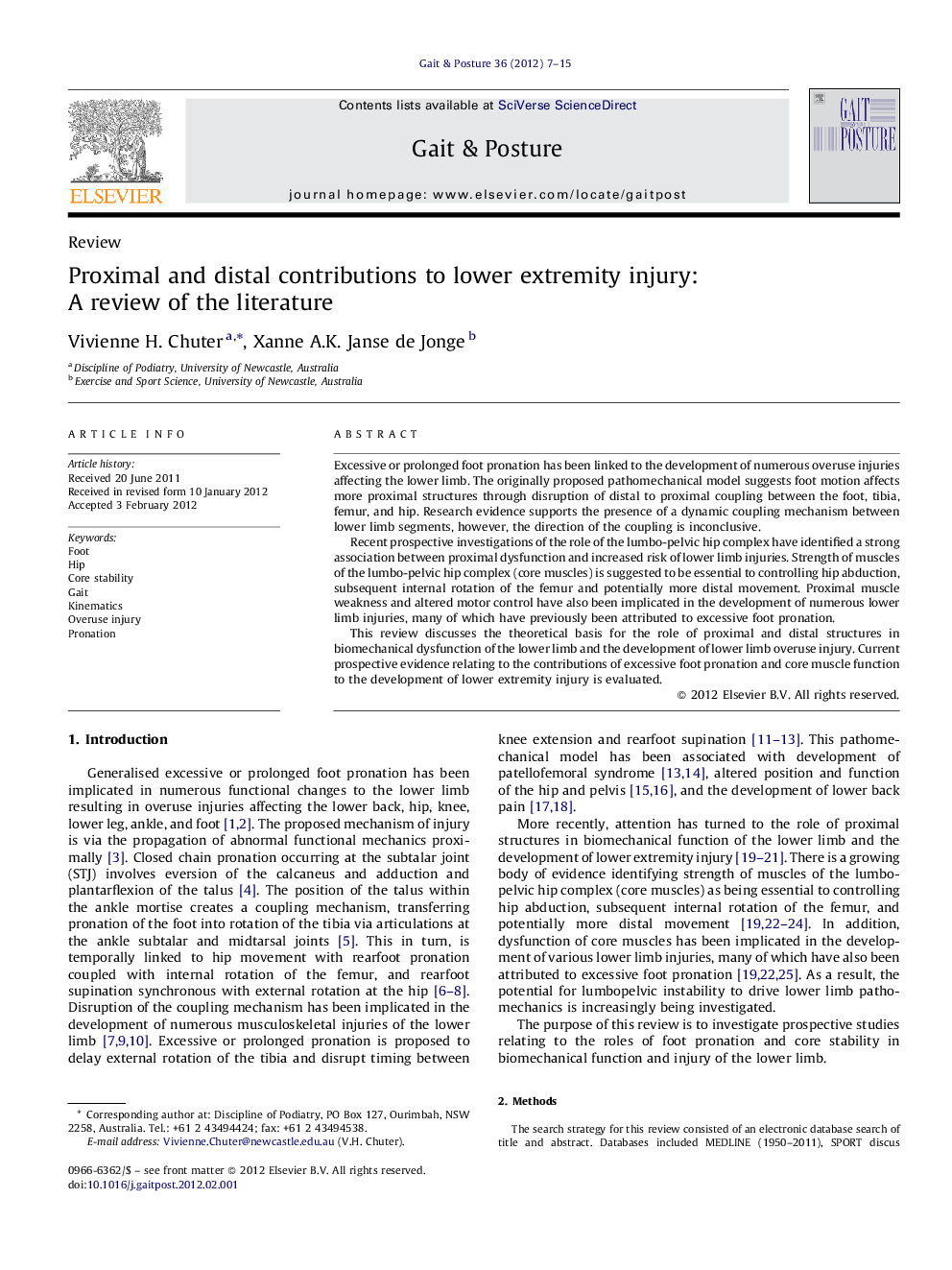| Article ID | Journal | Published Year | Pages | File Type |
|---|---|---|---|---|
| 6207416 | Gait & Posture | 2012 | 9 Pages |
Excessive or prolonged foot pronation has been linked to the development of numerous overuse injuries affecting the lower limb. The originally proposed pathomechanical model suggests foot motion affects more proximal structures through disruption of distal to proximal coupling between the foot, tibia, femur, and hip. Research evidence supports the presence of a dynamic coupling mechanism between lower limb segments, however, the direction of the coupling is inconclusive.Recent prospective investigations of the role of the lumbo-pelvic hip complex have identified a strong association between proximal dysfunction and increased risk of lower limb injuries. Strength of muscles of the lumbo-pelvic hip complex (core muscles) is suggested to be essential to controlling hip abduction, subsequent internal rotation of the femur and potentially more distal movement. Proximal muscle weakness and altered motor control have also been implicated in the development of numerous lower limb injuries, many of which have previously been attributed to excessive foot pronation.This review discusses the theoretical basis for the role of proximal and distal structures in biomechanical dysfunction of the lower limb and the development of lower limb overuse injury. Current prospective evidence relating to the contributions of excessive foot pronation and core muscle function to the development of lower extremity injury is evaluated.
⺠We reviewed the role of foot pronation and core stability in lower extremity injury. ⺠Foot pronation is generally not a risk factor for lower extremity overuse injury. ⺠Core stability is implicated in the development of knee and foot overuse injury. ⺠Core stability training should be used for lower extremity injury rehabilitation.
